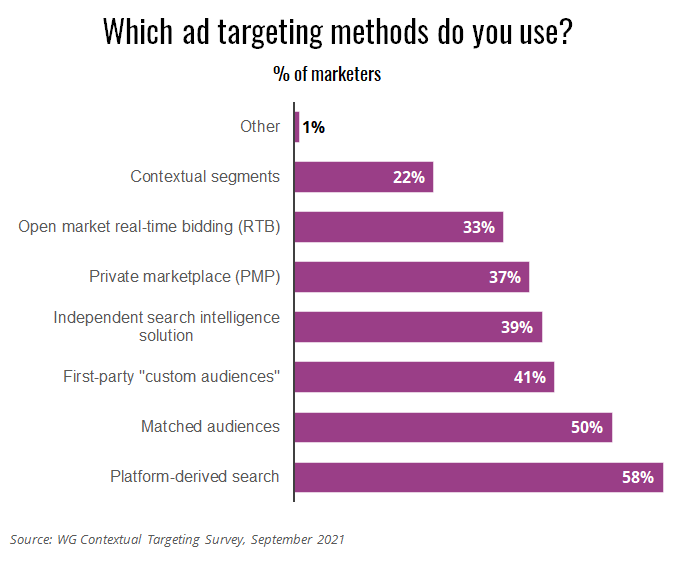As much as marketers want to reach target audiences, they also want their advertising to appear within brand-safe content that engages viewers. Contextual advertising has regained some of its former luster as audience-buying strategies face greater challenges.
“Over recent years, you’ve seen a real focus on audience buying, and there has been a shift where context has become more and more important,” Evan Giamanco, senior vice president of sales operations and strategy, news digital at WarnerMedia, said in this interview with Beet.TV. “We’re building a lot more technology here in order to really help us understand how to find those people at the right moments.”

Stricter privacy laws, the erosion of tracking cookies, concerns about brand safety and the proliferation of walled-garden media environments have led marketers to focus more on the context for advertising. Offering consumers a positive viewing experience that makes them more receptive to advertising is a key goal in helping marketers to stand out.
“We’re not just thinking about how we deliver our consumers a correct ad at the right time when they’re consuming their favorite program,” Giamanco said. “We’re also thinking about what’s the right amount of advertising to serve to them. You might be better off as an advertiser delivering a slightly lighter ad load to someone.”
Viewers Have More Control
The abundance of on-demand video on streaming platforms has given consumers more control of the viewing experience. This greater control translates into better viewer engagement with content, according to a study conducted by WarnerMedia, whose brands include HBO Max, CNN, TNT, TBS and TruTV.
“They’re being way more specific and intentional about what they watch and when they watch it,” Giamanco said. “They’re watching more and more TV across connected devices, and they’re looking for a much more personalized experience.”
Rethinking Ad Formats
Instead of having commercial breaks with standard-length spots, connected TV (CTV) platforms allow for more flexibility in ad placements. Giamanco said he expects to see more innovation in ad formats in 2022.
“A key trend to look out for this year is you’ll see companies start to rethink ad experiences and be way more considerate of the consumer,” Giamanco said. “We want to be really customer-focused and think about ad experiences outside your traditional 15- or 30-second spots.”
He cited HBO Max as an example. The streaming service, which has ad-free and ad-supported tiers, introduced its “brand block format” that gives advertisers a way to own an entire commercial break. A lighter ad load also lets brands stand out.
“We’re seeing that the ad engagement and brand recall against these experiences are trending much stronger than for a traditional ad experience,” Giamanco said.
You are watching “Engaging Stories, Impactful Innovation,” a Beet.TV Leadership Video Series presented by WarnerMedia. To view more videos from this series, please visit this page.









































